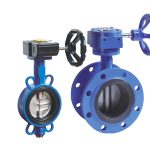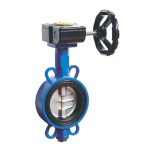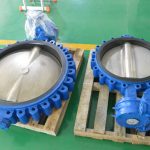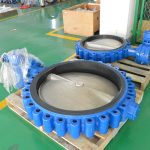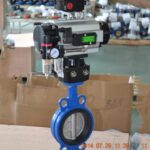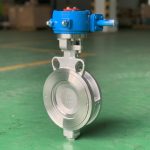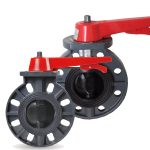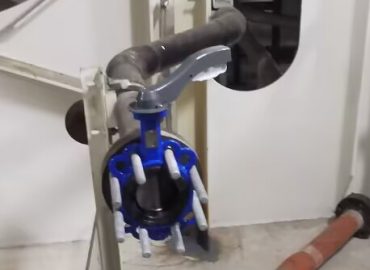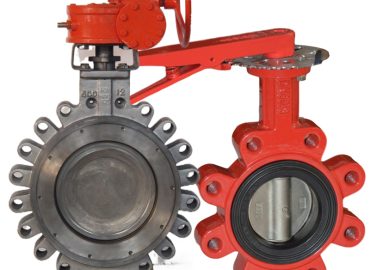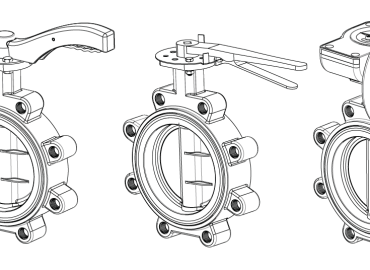In industrial processes, butterfly valves are critical components used for regulating the flow of fluids and gases. It is essential to ensure that they are functioning correctly to prevent any accidents or failures that could cause significant damage. One way to ensure the safety and reliability of butterfly valves is through pressure testing. In this article, we will discuss the procedure for a 16 butterfly valve pressure test, including the preparation, conducting the test, interpreting the results, and what to do after the test. By understanding this procedure, you can help ensure that your industrial processes are safe and efficient.
Introduction
The procedure for a 10 butterfly valve pressure test involves several important steps. First, the appropriate testing equipment must be selected, and the valve should be inspected for any damages or defects. The valve and gasket should be properly lubricated to ensure a proper seal. Next, the valve should be installed into the testing system, closed, and pressurized. The pressure should be monitored, and any leaks or pressure drops should be identified. After the test is complete, the valve can be removed from the testing system, and the test report can be analyzed to determine if the valve passes or fails the pressure test. If any defects or malfunctions are identified, they must be addressed before the valve is re-installed into the system, and regular maintenance and pressure testing should be scheduled to prevent future issues.
Explanation of a butterfly valve and its uses in industrial processes
A pn 16 butterfly valve is a type of valve used to regulate the flow of fluids and gases in pipelines. It consists of a circular disc or vane with a pivot point in the middle and an actuator that rotates the disc 90 degrees to open or close the valve. Butterfly valves are commonly used in industrial processes, such as oil and gas, chemical processing, water treatment, and food and beverage manufacturing, where the flow of fluids or gases needs to be precisely controlled. They are also popular due to their simple design, easy maintenance, and cost-effectiveness. Overall, butterfly valves play a crucial role in industrial processes by ensuring the safe and efficient transportation of fluids and gases through pipelines.
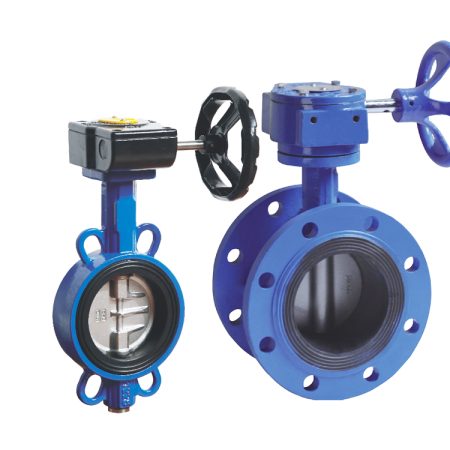
Importance of pressure testing for butterfly valves
Pressure testing is crucial for wafer butterfly valves to ensure that they are functioning correctly and to avoid any potential accidents or failures. Butterfly valves are designed to handle high pressures and temperatures, but over time, they can develop leaks or other defects that may compromise their performance. Pressure testing involves subjecting the valve to a controlled amount of pressure to verify that it can withstand the specified limits without leaking or failing. By performing this test, any defects or malfunctions can be identified early, allowing for proper maintenance or replacement of the valve to prevent future issues. Overall, pressure testing is a critical aspect of ensuring the safety and reliability of butterfly valves in industrial processes.
Purpose of the blog post
The purpose of this blog post is to provide an overview of the procedure for a pn 16 butterfly valve pressure test. In industrial processes, butterfly valves are critical components that help regulate the flow of fluids and gases. As such, it is important to ensure that they are functioning correctly to prevent any accidents or failures that could cause significant damage. Pressure testing is one of the ways to ensure the safety and reliability of butterfly valves. This blog post aims to explain the importance of pressure testing for butterfly valves, the steps involved in conducting a pressure test, how to interpret the results, and what to do next after the test. By the end of this post, readers should have a clearer understanding of the procedure for a 16 butterfly valve pressure test and the importance of regular testing for all industrial valves.
Pre-Pressure Test Procedures
Before conducting a pressure test on a 16 butterfly valve, there are several pre-test procedures that must be completed. First, the appropriate testing equipment must be selected, which may include gauges, pumps, hoses, and fittings. The butterfly valve should also be inspected for any damages or defects, such as cracks, corrosion, or warping. Any issues found should be addressed before proceeding with the pressure test. Proper lubrication of the valve and gasket is essential to ensure a proper seal and prevent damage to the valve during the test. It is also important to follow any safety guidelines and protocols to protect workers and prevent accidents or injuries. By completing these pre-pressure test procedures, the valve can be properly prepared for testing, ensuring accurate and reliable results.
Inspection of the valve and surrounding equipment
of the valve and surrounding equipment isInspection of the valve and surrounding equipment is an essential pre-pressure test procedure for a 16 butterfly valve. Before the pressure test, the valve should be thoroughly inspected for any damages or defects that could affect its performance during the test. This includes checking for cracks, corrosion, warping, or any other signs of wear and tear that could compromise the valve’s integrity. It is also important to inspect the surrounding equipment, such as the flanges, bolts, and gaskets, to ensure that they are in good condition and properly tightened. Any issues found should be addressed before proceeding with the pressure test, as they could impact the accuracy of the test results. By conducting a thorough inspection of the valve and equipment, you can help ensure the safety and reliability of the butterfly valve during the pressure test and in future industrial processes.
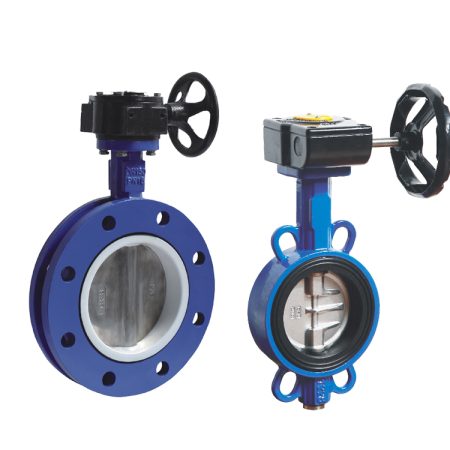
Preparation of the testing equipment
The preparation of testing equipment is a crucial pre-pressure test procedure for a 16 butterfly valve. Proper testing equipment must be selected and set up to ensure that the pressure test is conducted accurately and safely. This may include selecting gauges, pumps, hoses, and fittings that are rated for the pressure levels that the valve will be subjected to during the test. The testing equipment should also be calibrated to ensure accurate pressure readings. In addition, all safety equipment should be prepared, including gloves, safety glasses, and protective clothing, to protect workers during the test. By preparing the testing equipment properly, you can help ensure the accuracy and reliability of the pressure test results, as well as ensure the safety of everyone involved in the testing process.
Safety measures and considerations
Safety measures and considerations are essential before, during and after a 16 butterfly valve pressure test. Pressure testing can be dangerous, as it involves subjecting the valve to high levels of pressure, which can lead to serious accidents or injuries if not done correctly. All personnel involved in the pressure testing must be trained and familiarized with the testing equipment and procedures. Protective equipment such as safety glasses, gloves, and protective clothing should be worn at all times during the test. Additionally, all safety protocols and guidelines must be strictly followed to prevent accidents or injuries. Before conducting the test, the surrounding area should be cleared of any unnecessary equipment or items, and the testing system should be properly secured to prevent any movement or damage during the test. In conclusion, safety measures and considerations must be taken seriously when conducting a 16 butterfly valve pressure test to ensure the safety of everyone involved and prevent any accidents or injuries.
16 Butterfly Valve Pressure Test Procedure
The procedure for a 16 butterfly valve pressure test involves several critical steps. First, the valve must be thoroughly inspected for any damages or defects that could affect its performance during the test. Once the inspection is complete, the valve and gasket should be properly lubricated to ensure a proper seal. The valve should then be installed into the testing system and pressurized to the specified limits. The pressure should be monitored carefully using gauges to verify that the valve can withstand the pressure without leaking or failing. After the pressure test, the valve should be removed from the testing system, and the results should be analyzed to determine if the valve passes or fails the pressure test. Any defects or malfunctions identified should be addressed before the valve is re-installed into the system. It is also essential to schedule regular maintenance and pressure testing for all industrial valves to prevent future issues. By following this procedure, you can help ensure the safety and reliability of the butterfly valve in your industrial processes.
Application of pressure
The application of pressure is a critical step in the procedure for a pn 16 butterfly valve pressure test. The valve must be subjected to a controlled amount of pressure to verify that it can withstand the specified limits without leaking or failing. The amount of pressure applied should be gradually increased, and the valve should be monitored carefully using gauges to ensure that it can handle the pressure. This is necessary to avoid any accidents or failures that could cause significant damage during actual use. Applying too much pressure or applying it too quickly can cause the valve to fail, compromising its integrity and potentially leading to accidents or injuries. By carefully applying and monitoring the pressure during the test, you can help ensure the safety and reliability of your industrial processes.
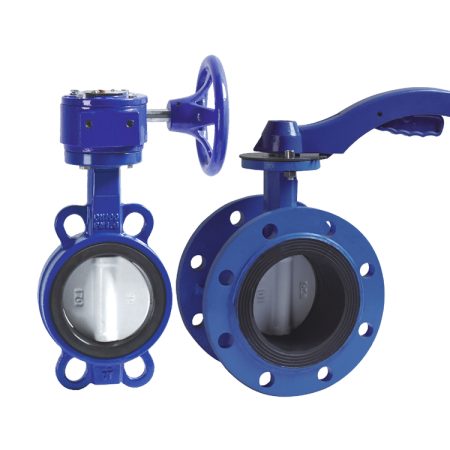
Monitoring and recording of test parameters
During a pn 16 butterfly valve pressure test, it is essential to monitor and record all test parameters accurately. This includes monitoring the pressure levels using gauges and checking for any leaks or pressure drops that may indicate issues with the valve. All test parameters should be recorded in a logbook or report to ensure that they can be reviewed and analyzed later. Accurate recording of test parameters is crucial to determine whether the valve passes or fails the pressure test accurately. It also helps to identify any potential defects or malfunctions early, allowing for proper maintenance or replacement of the valve to prevent future issues. By monitoring and recording the test parameters carefully during the pressure test, you can help maintain the safety and reliability of your industrial processes.
Observation of the valve’s performance and behavior
Observation of the valve’s performance and behavior is a crucial aspect of a pn 16 butterfly valve pressure test. During the pressure test, the valve’s performance should be closely monitored to ensure that it operates correctly and as expected. The valve’s behavior under pressure should be observed, and any unusual sound or vibration should be noted. This observation helps to identify any issues with the valve, such as leaks or malfunctions, that may not be detected through monitoring the pressure alone. It is important to observe the valve’s performance and behavior during the pressure test to ensure that it meets the required safety standards and to prevent any accidents or failures in the future. By carefully observing the valve’s performance and behavior during the pressure test, you can help ensure the safety and reliability of your industrial processes.
Steps taken in case of failed test
caseIn case of a failed test, there are certain steps that can be taken to address the issue and prevent future failure. Firstly, it is important to identify the root cause of the failure. This can be done by reviewing the test results and analyzing the data to determine what went wrong. Once the root cause has been identified, appropriate measures can be taken to rectify the issue. These measures may include code fixes, system updates, or changes to the testing methodology. It is also essential to communicate the failure with the relevant stakeholders and provide a detailed plan for resolution. By taking these steps, future tests can be improved, and the overall quality of the product or service can be maintained.
Post-Pressure Test Procedures
After conducting a pressure test, it is important to follow post-test procedures to ensure that the results are accurate and reliable. These procedures may include analyzing the data collected during the test, reviewing any anomalies or irregularities, and verifying the accuracy of the testing equipment. Additionally, it is crucial to document the results and any issues encountered during the test, as well as any actions taken to address these issues. This documentation can serve as a reference for future testing and provide valuable insights into the performance of the system or equipment being tested. Finally, it is also important to communicate the results of the pressure test with the relevant stakeholders and make any necessary adjustments or improvements based on the findings to optimize the performance and safety of the system or equipment.
Inspection of the valve and testing equipment
Inspection of the valve and testing equipment is an essential step in ensuring the safety and reliability of any system. The valve should be inspected for any signs of damage, wear and tear, or corrosion that may affect its operation. Any defects should be identified and remedied before the valve is put into service. Similarly, testing equipment such as pressure gauges, flow meters, and temperature sensors should be checked for accuracy and calibration to ensure that they are providing reliable data. Proper inspection and maintenance of these components can prevent costly failures and downtime, as well as minimize the risk of accidents or injuries. Therefore, it is important to establish a regular inspection and maintenance schedule for valves and testing equipment, and to follow manufacturer guidelines and industry standards when carrying out these procedures.
Recording and documentation of results
Recording and documentation of results is a critical aspect of any testing process. Accurate and detailed records provide a clear picture of the test parameters, equipment used, and the results obtained. This information can be used to compare current and previous testing data and identify any trends or patterns in system performance. Additionally, it can help identify any issues that may require further investigation or remediation. Proper documentation also ensures that testing procedures comply with industry standards and regulatory requirements. The records should include all relevant data, such as test conditions, dates and times, measurements, and any anomalies noted during the testing process. All documents should be organized and accessible, and any changes or updates should be clearly and accurately recorded. By maintaining accurate records, organizations can make informed decisions about maintenance, modifications, and upgrades to systems and equipment, ultimately contributing to improved system safety and reliability.
Analysis of the results
Analysis of the results is a vital step in any testing process as it helps to understand the performance of the system or equipment being tested. By analyzing the data, engineers and technicians can identify any issues that need to be addressed, such as anomalies or deviations from expected results. Further analysis can help identify the root cause of these issues and determine whether any corrective action needs to be taken, such as modifying the equipment or system. Additionally, analysis of results can provide insights into the behavior of the system under different conditions and help optimize its performance. This information can be used to improve the design of the system or equipment, reduce downtime, and enhance safety. Overall, proper analysis of the results is crucial for ensuring that the system or equipment being tested is reliable, efficient, and operates safely.
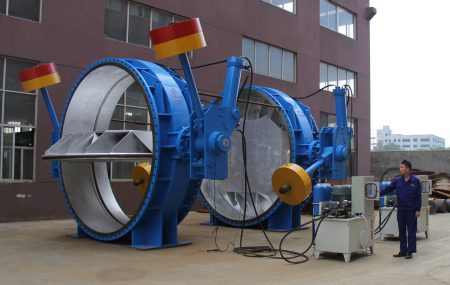
Conclusion
In conclusion, a pn 16 butterfly valve pressure test is an essential step in ensuring the safety and reliability of any system. The test involves subjecting the valve to a specified pressure range to determine its ability to withstand the operational pressures. The procedure for a 16 butterfly valve pressure test is straightforward and involves several critical steps.
Firstly, the valve must be inspected to ensure that it is in good working condition and can handle the test pressures. The testing equipment should also be checked and calibrated to ensure accurate results. Once the inspection is complete, the valve is installed in the test loop and connected to the testing equipment.
The next step is to gradually increase the pressure within the valve until it reaches the specified test pressure range. The pressure is maintained for a set period, and any leaks or irregularities are noted. If the valve passes the pressure test, it can be considered safe for operational use. However, if issues are identified, corrective action may be necessary to address them.
It is essential to record and document all results accurately, including the test parameters, equipment used, and any issues encountered during the testing process. The analysis of these results can provide valuable insights into the performance of the valve and help identify areas for improvement.
Overall, a pn 16 butterfly valve pressure test is a critical step in ensuring the safety and reliability of a system. By following the proper procedures and maintaining accurate records, organizations can make informed decisions about maintenance, modifications, and upgrades to systems and equipment, ultimately contributing to improved system safety and reliability.
Recap of the importance of pressure testing for butterfly valves
In summary, pressure testing for butterfly valves is an essential process that contributes to the safety and reliability of any system. Butterfly valves are used in many industries, including oil and gas, chemical processing, and water treatment, among others. These valves must be able to withstand high pressures and temperatures during operation, making pressure testing a crucial step in ensuring their performance. Pressure testing allows engineers and technicians to identify any issues or irregularities with the valve, which can then be addressed before it is put into service. By using proper testing procedures and maintaining accurate records, organizations can make informed decisions about the maintenance, modification, and replacement of butterfly valves, ultimately contributing to improved system safety and reliability.
Summary of the steps involved in a 16 butterfly valve pressure test
In summary, a pn 16 butterfly valve pressure test involves several critical steps. Firstly, the valve is inspected to ensure that it is in good working condition and can handle the test pressures. The testing equipment is also checked and calibrated to ensure accurate results. Next, the valve is installed in the test loop and connected to the testing equipment. The pressure is gradually increased within the valve until it reaches the specified test pressure range. The pressure is maintained for a set period, and any leaks or irregularities are noted. Accurate records must then be kept of all results and issues encountered during the testing process. Finally, the results are analyzed, and any necessary corrective action is taken. By following these steps, organizations can ensure that their butterfly valves are safe and reliable for operational use.
Call to action for readers to implement proper pressure testing procedures in their industrial processes
Call to action: As a responsible business owner or industrial process manager, it is imperative that you ensure the safety of your employees and customers by implementing proper pressure testing procedures. Don’t wait until an accident occurs, take proactive measures to avoid potential disasters. By following recommended guidelines from industry experts and conducting regular pressure tests on your equipment, you can detect issues early and prevent catastrophic failures. Your commitment to safety can also have a positive impact on your reputation and bottom line. So, make it a priority to implement proper pressure testing procedures in your industrial processes today.



